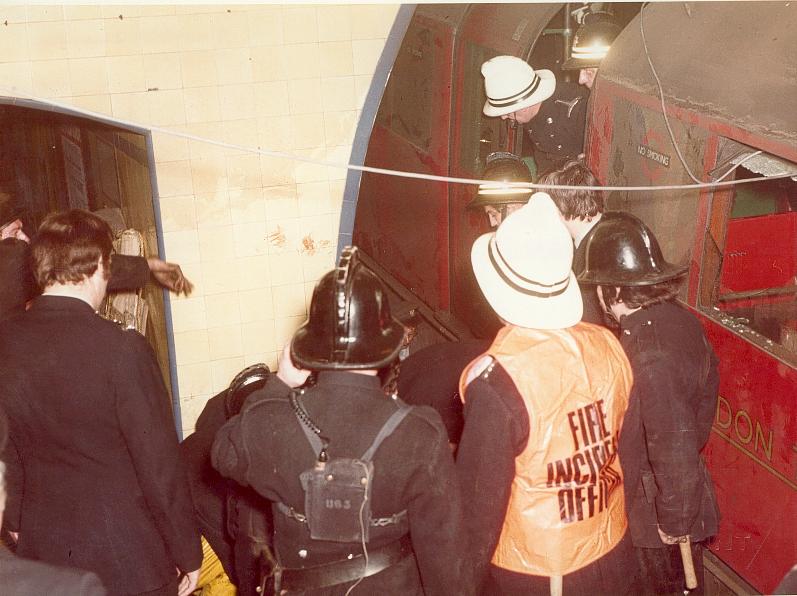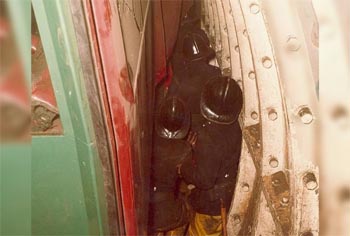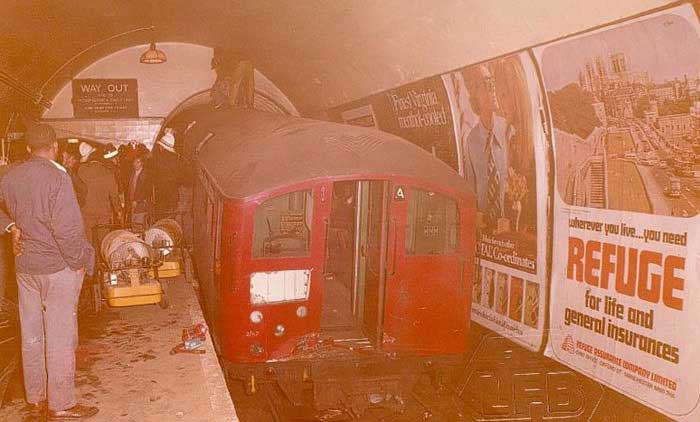
A southbound Northern City Line train from Drayton Park failed to stop at the platform and ploughed into the concrete wall at the end of the tunnel at Moorgate station. When rescuers reached the platform they found the front three carriages had been crushed together and the station in total darkness. A six-day rescue operation followed, involving 1,324 firefighters, 240 police officers, 80 ambulance workers, 16 doctors and numerous volunteers.

Steve Gleeson who was part of Lambeth blue watch that day, recounts his memories of the incident. Steve said:
"We were immediately told to get our spreading and cutting gear and take it down to the platform level. As we were taking our gear down, firefighters were guiding casualties, covered in dust and grime, up the other escalators to safety, as well as to grab more equipment."
We quickly began to get an idea of the size of the incident but we didn't really know what to expect until we got to the platform. Once there we found a carriage half at the platform and half into the tunnel but on a slant up into the ceiling.

"Our brief was to go further into the tunnel and start rescuing the trapped people. At the time, we didn't know how many people there were or what condition they were in."
He made his way through a 2ft gap between the tunnel wall and the side of the train. As he advanced past the first carriage, Steve found crews had already started working to release people trapped in the wreckage.
A crew from Clapham had already cut a hole in the end of the train carriage and we used that to go through to the next carriage. In there we met a senior officer who asked us to get into the roof of a carriage. We were right at the very front of the train – about 10 to 12 feet behind the driver's cab. While we were working on the roof of the cab, Paddington's crew were working on freeing a woman below.

Crews worked tirelessly in the dark, dusty tunnel, which was illuminated by only old style box lamps, to rescue the trapped people. In order to fit through some of the gaps in the carriages – and to avoid heat exhaustion, as temperatures reached up to 33C – Steve, and other firefighters, removed their helmet, tunic, belts and axes.
None of the crews working down there wanted to leave. They all wanted to stay and help the casualties they were with. We had to all be ordered out by senior officers to allow fresh crews to come in.
Steve Gleeson

Frank Nice was on duty with the Paddington red watch that day. Around 6pm, he arrived to take over from the outgoing crews that had been dealing with the incident for the last nine hours. Frank was ordered to the front of the train to assist with the rescue of Jeffrey Benton, 27, and Margaret Liles, a 19-year-old police officer. In order to free Margaret from the wreckage, doctors had to amputate her foot. He recalls:
"When the decision was made, I was ordered to place myself between the tunnel wall and the train and support her while the surgeons carried out their procedure. The courage of those two individuals will remain in my mind forever."

The cause of the accident remains a mystery, but following the disaster, a 10mph speed limit – previously 15mph – was introduced on all trains entering passenger locations, and in 1978 the 'Moorgate Protection' system was introduced, which automatically applied brakes if the driver failed to do so.
After the crash, Chief Fire Officer, Joseph Milner, paid tribute to "my 1,000 selfless heroes", and Frank sums up his experience...
The sights, smells and carnage – I will never be able to forget, but I, along with others, will always be proud to say that I played a small part in a major rescue and recovery incident.